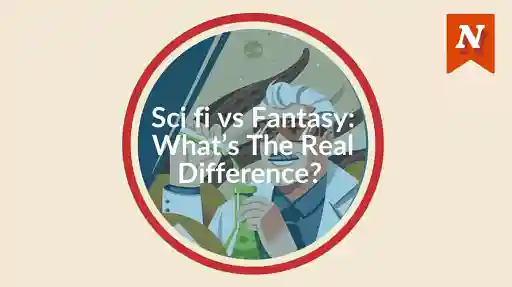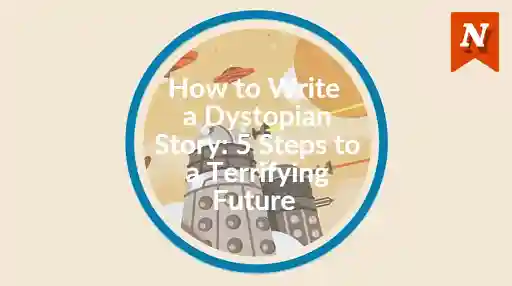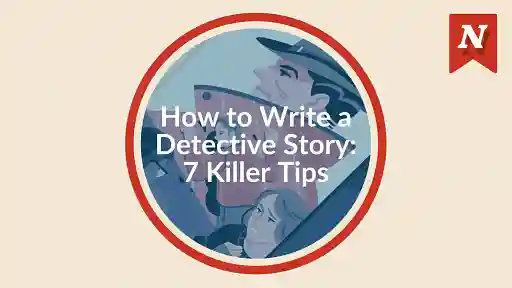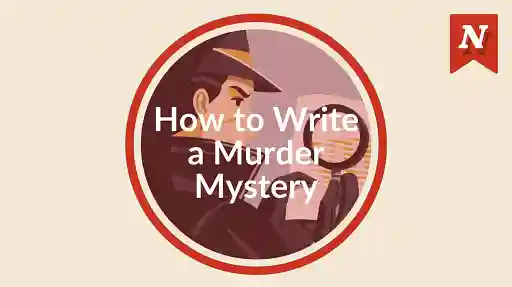What is romance? Terms and tropes Romance subgenres Writing romantic relationships Romance conflict and suspense Romance publishing Advice from romance authors Romance FAQs
Writing romance and love stories places human relationships center stage. Read a complete guide to writing romantic fiction. Use the links above to jump to the subtopic you want to explore right now.
What is romance? Terms and tropes
Read a brief history of romance lit, plus the difference between 'romance' as genre fiction and the broader, less genre-bound term 'love story'.
A concise history of romance lit
The modern, mass-market romance novel is far removed from the way the term 'romance' was used in early-modern fiction. These were tales of arms and chivalry (though the trope of the 'damsel in distress' is one enduring aspect).
Romantic fiction in English (in the sense of fiction centering intimate relationships) became popular in the 18th and 19th centuries.
Children's librarian Amanda Pagan shares how early romantic writing was written 'by women, for women.'
Ann Kjellberg for The Observer notes that fiction itself was often derided as a 'women's' form (by men who had fare greater access to education in the sciences and 'serious' subjects).
Johanna Thomas-Corr for The Guardian writes about the stigma associated with writing romance, historically. How some dismiss ‘love of an emotional truth’. The way romance focuses on feelings; care. Some use this to trivialize fiction generally, and the romance genre, especially.
Despite all this, the genre has continued to grow, and sales trump stigma. In recent years, readers devoured romance fiction for its comfort and character-driven storytelling. Small certainties in times of global uncertainty.
The romance novel has dominated global book sales and revenue generation in the 2020s. This shows that emotional truth (or the dream of 'happily ever after') is for everyone.
To this last point, the discussion in recent years has focused on how the genre can become more inclusive.
Many publishers and agents are eager to add underrepresented groups and identities to their list.
Romance vs love story: What's the difference?
Genre romance typically must hit specific story beats that readers expect. If you're writing, for example, feel-good romance, the expectation is a 'happily ever after' or 'happy for now' ending.
'Love story' is a broader term. It applies to fiction that may have romantic character arcs, but may also have downbeat endings or eschew usual romance genre expectations.
Common romance terms: A glossary
The romance writing and reading community has evolved many fun and funny terms. For example, 'Alphahole'. This describes 'an alpha hero who has crossed the line into toxic masculinity' ('Romancelandia Glossary', Bonnie Loshbaugh).
What are common terms in romance writing you should know if starting out?
- Big Mis. A misunderstanding between romantic leads. The conflict could have been resolved, had they only communicated.
- Boddice ripper. An old-fashioned term for more explicit romance novels that were popular around the 1970s and 80s. These often had extremely dubious treatment of sexual consent (hence the name).
- Category romance. A publishing categorization term. Shorter genre romance novels that follow guidelines, subcategorized by heat level. Harlequin and its subsidiary Mills & Boon are two of the biggest publishers of this type.
- Clean romance. A romance that does not include any sex or swearing (see the next section for more on romance subgenres). May include so-called 'closed-door' sex where only kissing is shown or implied.
- Erotic/romantic/steamy. Three levels of heat in romance novels' treatment of sex scenes. See a helpful Goodreads discussion here [trigger warning: Strong language]
- Happily Ever After or Happy for Now. Genre romance follows a format to a point. There are readers expectations, such as a ‘happily ever after’ ending (often abbreviated HEA) or ‘happy for now’ (HFN). Many readers choose romance due to its promise of uplifting, heartwarming endings.
- Meet-cute. Used in fiction and romance scriptwriting. A cute, charming or quirky first meeting between romantic leads. Allegedly originated in reference to the classic 1938 film, Bluebeard's Eighth Wife.
There are many more romance terms that are useful to know. See the glossary linked above for more, or an alphabetized romance terminology glossary by Jo Reads Romance.
Romance tropes: Recurring plot devices and motifs
What is a romance trope? A trope is a recurring plot device or motif.
Tropes in romance are a little different, as many readers enjoy (and rate and rank) favorite and least favorite tropes. Romance is a genre where you don't need to reinvent the wheel. A list of the most common romance tropes:
Popular romance tropes
-
Enemies to lovers. Characters who dislike or even loathe each other at first discover attraction beneath the conflict.
Trope example: Red, White, and Royal Blue by Casey McQuiston. This MM/LGBTQI+ novel is about the first son of the United States and his enemies-to-lovers tryst with a British prince. -
Friends to lovers. Leads who start out as friends discover mutual romantic attraction.
Trope example: Jess and Nick in the 2011-2018 TV series New Girl, who start out as platonic flat-mates. -
Forbidden love. Would-be lovers are forbidden to be together by family, society, or other prohibition.
Trope example: Shakespeare's Romeo and Juliet or the myth of Orpheus and Eurydice in Greek mythology are classic examples. A contemporary example is Brittainy C. Cherry's Loving Mr. Daniels, about a student-teacher affair. -
Second chances. The romantic leads had a previous or the possibility of one, but it was broken off.
Trope example: The story arc between Anne Elliot and Frederick Wentworth in Jane Austen's Persuasion (1817). See Austen Variations' discussion of the second chance themes in the book for more [spoiler alert]. -
Fake dating/relationships. Leads pretend to date for a purpose (such as making another party jealous) but end up falling for one another.
Trope example: The scenario in the rom-com movie The Proposal. A high-powered book editor (played by Sandra Bullock) must pretend she is engaged to marry her assistant (Ryan Reynolds), to avoid deportation to Canada.
Interested in learning more about romance tropes? Writers Write has a comprehensive list of 101 romance tropes.

Recommended reading
- Finding story ideas romance hasn’t exhausted: 7 sources
- Writing love stories: Creating love letters to readers
For all its commercial might, the novel continued to be derided as a “women’s” form, read in the boudoir and bound to women’s preoccupations like love and marriage while the more prestigious vehicles (and publishers) took on history and heroic deeds. Women still predominate among readers of fiction, and romance readers are the titans of them all.
Ann Kjellberg, 'Derided for Centuries, Romance Novels Are a Huge Business',
The Observer, 2nd September 2022
Romance subgenres: Popular and trending niches
One of the reasons the romance genre has such a vast share of the book market is there is a flavor of entanglement for every reader.
Curious about romance subgenres or finding your niche? Explore popular subgenres and their hallmark features:
Popular romance subgenres and their features
Going alphabetically, subgenres in romance include:
African American and Black Romance
Romance books that reflect values and culture within African American and black communities. As Goodreads describes it: 'emotional, heartfelt, and romantic stories that reflect the values and dreams of African American culture.' Excuse Me While I Ugly Cry by Joya Goffney is one example.
[Ed's note: Zora Neale Hurston's 'Their Eyes Were Watching God' is a moving, literary love story with beautiful prose style. It follows a woman named Janey's journey from young adulthood to womanhood, and her search for real love and autonomy, in the 1930s American South. I read this gem of a book for a college elective on African American Womanist fiction and theory.]
Billionaire romance
In this subgenre, tycoons, old money or new money CEOs and such, are the main love interests. Romance authors and readers debate whether this trope is passe. Is it credible to depict the super-rich as inclined towards cuddles and philanthropy?
Clean and wholesome romance
More a subcategory than subgenre, these books do not feature sex on the page (it is at most implied as occurring behind closed doors).
P.N. Hinton for Book Riot makes a good argument for a better term than 'clean' (since the implication that sex or its description is 'dirty' is not sex-positive). This sub-category appeals to readers who prefer sexual content in romance to be left to the imagination.
Contemporary romance
Romance novels that are set contemporaneously in the era of their writing (as opposed to, for example, historical romance). Typically, contemporary romance has an optimistic ending such as a HEA or HFN resolution.
Victoria Giardina for the New York Post compiled this list of contemporary romance hits.
Dark romance
Dark romance explores relationships that lie outside norms. Think stories that include trauma and/or violence and often carry content warnings. BookBub offers this list of 21 dark and twisted romance books [content warning: summary descriptions of violent scenarios].
Erotic romance
Erotic romance books, unlike clean romance, have strong, often explicit, sexual content and language. They may have crossover with other subgenres (such as paranormal or historical elements).
Fantasy romance
Books that draw on the narrative devices, subjects and themes of both romantic and fantasy fiction. For example, Ink Blood Sister Scribe by Emma Törzs.
Gay, Lesbian and Queer romance
Though usually groups separately, these are romance books where a central romantic relationship is between LGBTQI+ characters. Jessie Walker's If There's a Way (M/M) or Delilah Green Doesn't Care by Ashley Herring Blake (F/F) are two examples.
Gothic romance
This hybrid genre blends human-relationship-focused stories with dark fantasy elements. Keri Lake's Nightshade, for example, is a 2023 fantasy romance that combines Gothic angels vs demons elements with a romantic story arc.
The above are just some of the many romance subgenres available to niche down into, depending on your preference and interests.
Browse Goodreads' 'related genres' pages and Amazon's romance subgenres for further information and examples of books in wider range of romance subgenres that includes Christian romance, paranormal romance, and more.
Finding your romance niche: 7 tips
How do you decide what romance subgenre you want to write in? To decide on a genre:
-
Write where passion and experience lie.
Do you feel passionately about representation of an aspect of your identity in fiction? Is there a romance subgenre where you can enrich stories with your own experiences?
-
Shape what you want romance to be.
As an author, you have the power to contribute perspective or representation you may feel the genre's lacking. Be the change.
-
Combine loves where possible.
Caught in a love triangle with fantasy and romance? Why not write fantasy romance? Draw upon the eclectic reading you've done.
-
Consider subgenre size.
Keep in mind that your subgenre choice may shape audience size or reader demographics. Some romance subgenres are for R18 audiences only, for example. Who do you want to write for?
-
Ask which romance subgenres make commercial sense.
If you want to write romance and make good money, consider a top-selling subgenre such as romantic suspense. Remember that writing good romance is as challenging as any genre, though. It's not the 'easy' option.
-
Decide your research willingness.
Some subgenres (such as historical or medical category romance) may need more research.
-
Consider heat level and your comfort level.
How comfortable are you with getting steamy or erotic in your writing? Ensure you're comfortable in owning your output (or use a pen name if you need personal/public persona separation).
🗣️ What romance subgenre are you writing (or thinking of writing) in? Tell us in the comments!
See Now Novel's upcoming webinars for more on subgenres. Published authors and writing coaches lead sessions on genre packed with writing insights.
Recommended reading
- Writing coach interview: Romy Sommer on romance and founding ROSA
- Author interview: Writing historical romance with Fil Reid
I sometimes feel like feel-good romances are more immersive than any other genre because you have to write the character without any façade.
Author and story coach Zee Monodee, interview for Now Novel
Writing romantic relationships: Chemistry and psychology
Writing romance requires excellent characterization ability. You have to make your reader care about this relationship on the page, its ups, downs, and outcome.
Read on for tips to create relationships that feel real, using the psychology of desire and attraction, key stages in romantic connection, and more.
What makes romance in stories feel real?
-
Desire earned through bonding and connection.
Although so-called 'insta-love' (love at first sight) is an oft-used romance trope, it is divisive in fan communities. The danger with using this trope is the spark may be too immediate, insufficiently earned by the actions, interactions and complex behind-the-scenes brain chemistry that leads to human bonding. -
Realistic and interesting power dynamics.
Power is an interesting aspect of relationships and love stories. The power dynamic between lover MCs in a Regency romance may be quite different from a contemporary romance. Even if a main character is disenfranchised politically, though, intimate/private relationships may have their own power dynamics that don't follow gender norms or social mores behind closed doors. -
Passion and the gaze
Many academic studies have been written about 'the gaze' - how observation and the ways we see and describe objectify and reveal our attractions, passions, and desires, and fetishes.
Part of attraction's building in fiction lies in the gaze, what descriptions a viewpoint character gives of the person whom they desire (whether visual, of touch, or drawing upon other senses). Juicy descriptions full of want help to build a believably desirous gaze. -
The push and pull of suspense and suffering
Will the romance story's protagonists be together? Won't they? Many of the great romances (including literary romance) have very long engagements, interfering family members, rivals and setbacks. All kinds of risks, longings, on-again hopes, and off-again dashed dreams.
Building romantic attraction: Useful models of love
Writing romance gives you built-in story arcs to work with, since the path to intimacy follows similar (though not always linear, or unbroken) routes.
Sternberg's triangle of love
In the late 1980s, psychologist Robert Sternberg developed a triangular theory of love. Sternberg breaks love down into these three components:
- Intimacy: the development of feelings of closeness, bondedness and connection
- Passion: Strong feeling and desire for the other that leads to attraction, romance, and possibly sexual consummation (the latter may not be a factor in, for example, asexual relationships, in which passion may be emotional and intellectual more than physical)
- Decision and commitment: How the above feelings and other factors (such as emotional and physical needs being met) influence one person to choose to commit to another
These three factors are useful to think about, as each may be milked for narrative suspense, awkwardness, tension, conflict.
The three-stage model of attachment
Many articles on the psychology of romance boil romantic attachment down to three romantic stages:
- Lust: Primarily driven by hormones, a desire to seduce or be seduced. Melanie Greenberg, a licensed clinical psychologist, describes the intensity and excitement of this stage that is laced with mystery in the article linked above.
- Attraction: You begin to fantasize about the object of your affection, dwelling on them more as attraction grows. Motivation/reward brain chemistry gets involved (e.g., dopamine).
- Attachment/rejection: Attachment leads to wanting to make a more bonded commitment to the other. This is the stage at which serious decisions (such as marriage, cohabitation, or deciding to part ways) occur.
If you look at the above, it fits three-act story structure in its tri-part sequence (though of course lust, attraction, and some degree of attachment could form (or sever) at any point in a romance).
Putting it all together: 6 elements of relationship-building to use in fiction
Combing the two three-part models of love and attachment formation above, we get six elements you can mine to create intriguing romantic story developments:
- Lust: What does your main character find hunky/sexy/flirty/gorgeous/cool in the other romantic lead? What descriptive details kindle desire?
- Attraction: What thoughts, hopes, dreams and desires will the entry of the other into your romance protagonist's life engender?
- Intimacy: What shared experiences (in real-time or past experiences or commonalities shared via conversation) bring your lovers closer? The shadow side of this, is what creates doubt/uncertainty (reasons to not grow intimate)?
- Passion: What awakens strong feelings and fantasizing thoughts that could border on obsessive? How intense is the passion, from each side? When might it wax or wane (what would trigger these shifts and cycles)?
- Decision: What criteria do your lovers use to decide on partners? What is each lover's 'love language'?
- Attachment/rejection: Why, when, and where are your lovers when each decides to commit to the other? Is there a temporary rejection (or a 'dark night of the soul' where rejection seems likely)? Why?
Looking at lust, attraction, intimacy, passion, decision and attachment/rejection, we see how psychology and emotional change create the dramatic core of romance.
There's inherent tension in public/private worlds of feelings colliding.

Recommended reading

Meet top editors, designers, and marketers
The best professionals are already on Reedsy. Sign up now to request free quotes.
Romance conflict and suspense
What drives romance and creates the heart-in-mouth anticipation that car chases and impending explosions create in action? The unpredictability and volatility of human emotions, choices and actions.
Types of conflict in romance storytelling: Internal vs external
All stories contain both internal and external conflict. Conflict is inevitable in the midst of upheaval and change, as new frictions emerge.
Internal conflict is the inner, private struggle a character undergoes. Difficult dilemmas, choices, doubts and misgivings.
External conflict is conflict between your romance protagonist and other forces, including other characters, society, environment and more (exactly what depends on your subgenre).
In historical romance, a major source of external conflict may be societal pressures, for example the massive pressure upon women to marry in many of Austen's Regency-era arcs (and in many contemporary romances set in cultures that carry similar expectations and values).
Compare to fantasy romance, where external conflict might be a battle between angels and demons (or consequences for forbidden love between mortals and demigods).
Internal conflict sources in romance
Popular internal conflict sources in genre romance and love stories include:
- Past trauma, scars or psychic wounds: Perhaps your protagonist has been burnt by love before. Maybe they had a painful childhood where their parents' relationship did not give them a positive model for secure attachment.
- Competing wants and needs. Sometimes characters may have to choose between incredible career opportunities in other places and love beckoning back home.
- Fear of commitment. Popular culture loves the notion of 'the one' or 'soulmates'. The idea of striving for the perfect romantic fit and match has whole dating app ecosystems built around it.
- Self-doubt. Poor self-image or internalized erosion of self-esteem may leave a romantic lead asking, 'Am I good enough?' and self-sabotaging.
- Confusion over feelings. To be able to pursue what you want, you need to know what you want, first. Confusion may lead to inner strife for romance protagonists.
- Competing loyalties. A character who is grieving a spouse or has other competing loyalties may close off the possibility of romance. Or else they may struggle between pursuing new sparks and feeling guilt.
- Secrets. A romance protagonist may harbor a secret they don't want a new lover to learn. Perhaps they fear it will scare the other away.
What are other internal conflict sources in romance you can think of? Share yours in the comments!
External conflict sources in romance
There are as many potential conflict sources in romance as there are in other genres, given the eclectic range of themes and eras across romance subgenres.
Seven possible external conflict sources include:
-
Hostility based in misunderstanding or bad first impressions
A classic example is Lizzie Bennet's initial dislike of D'Arcy in Pride and Prejudice after she overhears him speaking dismissively of her at a ball. -
Value clashes
Future lovers may have clashing values to begin. The development of attachment then depends on how they learn to compromise or sacrifice to enable harmony (or the conflict might endure, too). -
Rivals and 'others' competing for focus
Tangled love triangles may see protagonists pursued by multiple parties. There may be infidelity and indiscretion. This may create conflict between secondary characters, too (think of the camping suitors vying for Penelope in Homer's Odyssey). -
Societal pressure and expectations
Perhaps pressure from family steers a protagonist towards a troubling romantic choice. Or they're happy on their own, but the pressure to wed and procreate is on. Arguments may ensue. -
Distance or sudden separation
In Zora Neale Hurston's coming-of-age love story, Their Eyes Were Watching God, the protagonist and her lover are separated by a hurricane which creates strong narrative suspense. -
Legal or political opposition
Would-be lovers may face legal, political or religious barriers (e.g. national or local bans on same-sex or interracial marriage, depending on place and era). -
Family objections
Lovers' family might oppose love on personal, class, religious or other grounds.
🗣️What's an interesting internal or external conflict in a romance you've read and loved? Share your recommendation in the comments!
Recommended Reading
- How to write a romance novel: Avoid romance writing mistakes
- Story ideas: Romance brainstorming in 8 easy steps
Love is divine only and difficult always. If you think it is easy you are a fool. If you think it is natural you are blind.
Toni Morrison, The Origin of Others (2017), p. 69.
Romance publishing - publishers and process
What do you need to know about publishing if you wish to write genre romance or love stories? Learn all about romance publishing options, whether you need an agent, and more.
Romance publishing options
As a romance author, you have many options for publication:
Indie romance publishing
Many romance authors are indies. If you use viral social media marketing well (like Colleen Hoover did with TikTok) you could build a legion of fans, to the point traditional publishers come knocking to sign you.
This is uncommon for first-time authors, it should be said. As an indie, though, you have the benefit of owning what you create, choosing self-publishing platforms, and how to sell and market your book.
Traditional romance publishing
Traditional publishers with romance imprints include:
- HarperCollins, whose parent company News Corp owns Harlequin as of 2014. Learn more about what Harlequin is currently seeking in submissions
- Avon Books, another romance imprint of HarperCollins specializing in 'inclusive and emotional stories'.
- Berkley, an imprint of Penguin Random House specializing in genre fiction and publishing romance bestsellers such as Ali Hazelwood and Carley Fortune.
- Forever, a romance imprint under the Hachette Book Group. It publishes 'uplifting contemporary stories to captivating historical fiction and delightful romantic comedies, to sweeping historical romance and small-town love stories.'
- Pocket Books, a division of Simon & Schuster that primarily publishes paperbacks (see their 'must-read' romances)
Looking for further romance publishers? See Reedsy's list of top romance publishers.
Publishing romance - do you need an agent?
Traditional large publishing houses and their imprints typically do only accept agented submissions.
Among smaller and independent publishers, you will find publishers who accept direct submissions. Some run contests to discover new work (this is how Now Novel member Fil Reid's Arthurian romance series gained publication).
Independent publishers often have more time for their authors, although advances may be lower. Still, it is a valid starting point for building your backlist and clout as you establish your romance voice and niche.
Further romance publishing resources
The Romance Writers of America has a simple intro guide to the romance genre. It includes information on trends in romance readership. Further information is available with membership.
The equivalent body in the UK is the Romantic Novelists' Association (RNA). In Canada, there are multiple regional organizations including Toronto Romance Writers and Alberta Romance Writers.
South Africa's ROSA (Romance Writers Organisation of South Africa) was co-founded by Now Novel writing coach, Romy Sommer and Mandy Verbaan.
Writers Write offers this further list of romance resources, including Australian romance associations and helpful romance writing videos and resources.
Commissioning editor Vikki Moynes gives useful tips for starting out writing romance via Penguin Books.
Recommended reading
- Self-publishing on Amazon: 20 pros and cons for authors
- Writing to market: 10 pros and cons to weigh
Even as a reader, books are life changing — it’s not just a hobby. It’s not just something you do as an escape. You can read something and not realize that you’re gonna connect to it on a level that inspires you to leave your abusive situation, you know?
Colleen Hoover, interview with today.com, June 29 2023.
Advice from romance authors
What do romance authors say about writing romance and love stories? Read more about specific challenges involved, plus tips for process and finding your voice.
Romance author Romy Sommer: Create emotional payoffs for your reader
Many readers will know Now Novel coach Romy Sommer. Romy is hybrid-published (including by HarperCollins). She runs excellent webinars on romance writing, writing craft and process.
Romy shared with us why the stereotype that romance is 'formulaic' is untrue. You still need to pay attention to individual dynamics:

"I would say the biggest challenge [in romance] is the emotional payoff for the reader. Because we all know how it’s going to end, we all know that the couple’s going to land up together which is why people read it – because they know that it’s a safe place to go when they just want an escapist read. But it’s so focused on emotion, and you’ve got to deliver a certain payoff for the reader, otherwise they feel cheated.
"So it’s quite difficult crafting that, and a lot of people think romance is formulaic. It’s not, because emotions and people’s relationships and people’s psychology is different every single time." Interview for Now Novel, December 2021."
Romance author Zee Monodee: Find your themes and voice
Many readers will also know Mauritian romance author, editor and writing coach Zee Monodee, through her work with Now Novel.
Zee’s advice to a writer who shared that they enjoy ‘writing about independent, intelligent and capable women’, but don't want to be stuck in one genre:
My suggestion - find your theme; that one thing that will pervade everything else never mind the genre. For example, for you, it could be independent, intelligent, and capable women. Such a woman would be different in a small town setting as opposed to say, a post-apocalyptic setting, or even closer together, small town v/s corporate office.
Zee Monodee, via author's Goodreads page.
Just find your theme, your voice, your strength and even brand, and let this take you across genres. You don't have to be stuck to just one genre!
Romance author Colleen Hoover: Avoid comparison and write for yourself
In her interview with today.com, Hoover speaks about treating writing as a hobby. Here are words from the author's site on keeping a healthy relationship to creative work:
1) Do not compare yourself to other authors. If you’re focused on how your book didn’t sell as many copies as “so and so’s” book, you’ll begin to resent your work and your career.
Colleen Hoover, author's website FAQs
2) Write for yourself. If you try to write what you think people want to read, you won’t be able to put your whole heart into it.
Romance author Carolyn Brown: Tap into the universal
Author Carolyn Brown has an incredible 169 distinct works listed on Goodreads. Although not direct advice, there is truth in what the author says in her bio. Writing about relationships is to write about enduring, universal aspects of human nature:
Human nature hasn't changed a bit since Eve coveted the fruit in the Garden of Eden. Settings change. Plots change. Names change. Times change. But love is love and men and women have been falling in and out of it forever. Romance is about emotions: love, hate, anger, laughter... all of it.
Carolyn Brown, Goodreads author bio.
Brown goes on to say that her role is to move the reader, to make them laugh or reach for a tissue.
Recommended reading
- Writing romance: Advice from 8 authors and agents
- How to write love stories: 7 romance novelists’ wisdom
The biggest thing I’ve learned in publishing so far is how little control you have over any of it. As an author, all you can do is write the best books you can. Everything else - timing, popularity, sales, etc. - is just blind luck. Because of this, there is absolutely no sense in comparing one author’s success to another’s.
Helen Hoang, 'Debut Author Interview: Helen Hoang, Author of The Kiss Quotient', Writer's Digest, June 19 2018.










